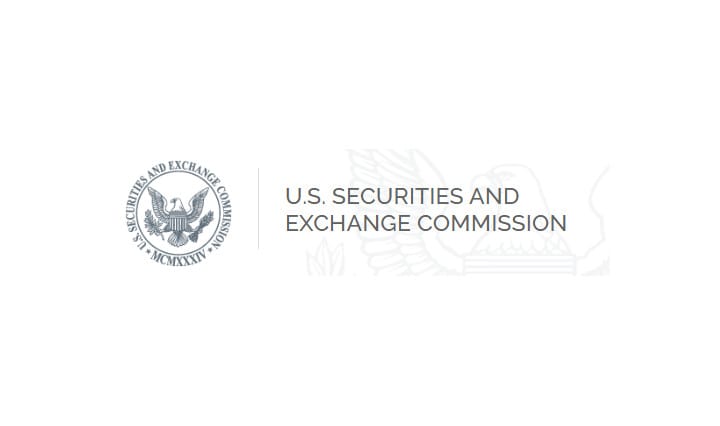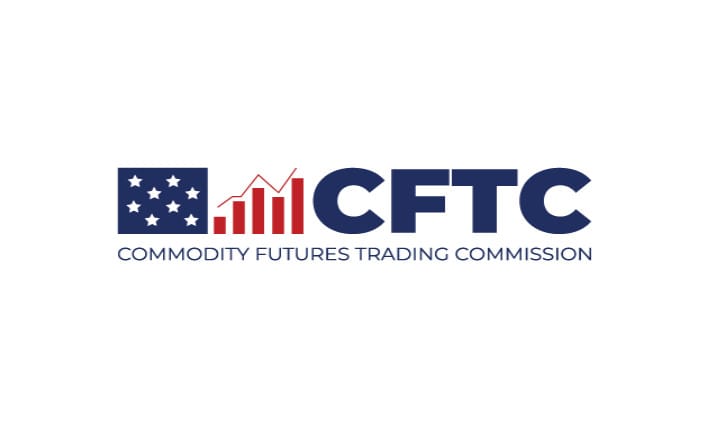Industry is 'big mad': NAPFM, MFA, and AIMA file brief challenging the SEC’s Securities Lending and Short Position Reporting Rules and request that both rules be vacated.


Wut Mean?:
The National Association of Private Fund Managers (NAPFM), Managed Fund Association (MFA), and Alternative Investment Management Association (AIMA) have challenged two rules recently adopted by the Securities and Exchange Commission (SEC) that require reporting and public disclosure of securities lending and short selling activity in an opening brief filed in the U.S. Court of Appeals for the Fifth Circuit.
Again, this litigation is about two rules finalized by the SEC that impose inconsistent requirements for the public disclosure of the same market activity: short sales of securities. The petitioners claim that even though the rules are indisputably interconnected and were finalized on the same day, neither rule considered how the two disclosure requirements interact.
Industry claims the final Short Sale Rule, the SEC acknowledges the benefits of short selling to price discovery, liquidity, and good corporate governance. When explaining its rationale for a short sale disclosure framework with aggregated, anonymized, and delayed public reporting, the SEC cited the benefits of short selling and the Commission’s desire not to inhibit the practice. However, industry is claiming on the same day, the SEC adopted the Securities Lending Rule that has the opposite effect--recall, the securities lending disclosure framework will reduce short selling by publishing granular data on individual securities loans almost immediately.
NAPFM, MFA, and AIMA attempt to argue the SEC never evaluated the cumulative economic effect of the two rules on affected parties or the harms to price efficiency, market liquidity, competition, or capital formation. Instead, they believe the SEC adopted 'contradictory' disclosure frameworks in the rules without any acknowledgment or explanation.
“The SEC’s defective rulemaking process produced two flawed, inconsistent rules that will harm investors and the markets. The rules should be vacated,” said Bryan Corbett, MFA President and CEO. “Adopting two rules with contradictory approaches to the disclosure of data regarding short selling on the same day without explanation is arbitrary and capricious. The SEC needs to go back to the drawing board and craft rules with a consistent, coherent approach that will not harm market participants or undermine the US capital markets.”
“The adoption of these two rules epitomises arbitrary and capricious rulemaking by adopting inconsistent disclosure frameworks for interlinked transactions. These rules will unnecessarily impair market efficiency and price discovery, thereby harming both markets and market participants. Accordingly, the court should vacate both rules and direct the SEC to adopt consistent reporting and disclosure regimes that take into account the interrelated nature of securities loans and short sales and are designed to protect both market efficiency and market participants,” said AIMA CEO Jack Inglis.
The petitioners request that both rules be vacated based on their arguments that, among other things:
- The SEC engaged in arbitrary and capricious rulemaking when it adopted two interrelated rules without acknowledging or explaining their contradictory approaches to disclosure of the same market activity.
- The SEC violated the Securities Exchange Act of 1934 (Exchange Act) and the Administrative Procedure Act (APA) by conducting separate economic analyses that ignored the cumulative impact of the two interrelated rules.
- The Securities Lending Rule is contrary to the statute and the SEC’s own prior views.
- The SEC deprived the public of a meaningful opportunity to comment on material changes to the securities lending rule.
- The SEC did not reasonably explain why it refused to adopt a less burdensome alternative than the regime it ultimately adopted in the Short Sale Rule.
Other 'points' from the brief:
The brief claims the SEC’s 'failure' to acknowledge its diametrically opposed, incoherent approaches to these two rules and provide sufficient justification for that inconsistency as required by the APA.
In the short sale rule, the Commission concluded that publicly disclosing short sales can substantially harm markets and investors by revealing short sellers’ investment strategies, and by Increasing the threat of retaliation against short sellers by other market participants. It therefore determined that short-sale information should be published only on an aggregated and delayed basis. In the securities lending rule, however, the Commission took the exact opposite approach, requiring the publication of granular detail reflecting short-sale activity on a transaction-by-transaction, next-day basis. Not only did the Commission fail to justify that contradictory approach; it did not even acknowledge the issue.
The brief also states the SEC’s failure to consider the cumulative economic impact of the two rules on affected parties when it conducted the economic analysis required under the APA and Exchange Act.
The Commission’s economic analysis in each rule was just as deficient, because the Commission never assessed both rules in combination. Incredibly, the Commission stated that it would ignore the Short Sale Rule’s requirements in its economic analysis of the Securities Lending Rule because the former “remained at the proposal stage”—even though it was scheduled to be finalized minutes later at the same open meeting. And the Short Sale Rule considered only the effects of any overlap in “compliance periods” between the two rules—not any substantive overlap.
In addition to they believe the SEC’s failure to consider the rules in tandem, the brief argues that each rule suffers from flaws that render it invalid in its own right. As it relates to the Securities Lending Rule:
The Commission’s decision to require next-day publication of granular information about individual securities loans—again, proxies for short sales—directly conflicts with Congress’s directive in the Dodd-Frank Act to only publish short-sale information on a periodic, aggregate basis. And it also departs from the Commission’s own prior findings in a report prepared pursuant to the Dodd-Frank Act without any explanation. Furthermore, the Commission also violated the APA’s procedural requirements when it made significant changes in the final rule—including changes it wrongly believed would address concerns about overly granular short-sale disclosure—without giving the public a meaningful opportunity to comment on whether those changes would actually solve the problem.
With respect to the Short Sale Rule:
The Commission failed to explain why it imposed the substantial costs and increase in security risks of a brand-new reporting regime instead of simply expanding an existing regime that already publishes similar information. The Court should likewise reject the Commission’s attempt to invent a global short sale reporting regime by extending this rule’s reporting requirements to short sales of foreign securities traded on foreign exchanges. Congress gave the Commission no such authority to apply its rule extraterritorially, and doing so makes no sense in its own right.
The two rules represent unlawful exercises of rulemaking authority, both in combination and on their own, and must be vacated in order to protect investors and the markets.
What do these rules do again?:

Rule 10c-1a (Transparency in the Securities Lending Market) will require certain confidential information to be reported to an registered national securities association (RNSA) to enhance the RNSA’s oversight and enforcement functions. Further, the new rule requires that an RNSA make certain information it receives, along with daily information pertaining to the aggregate transaction activity and distribution of loan rates for each reportable security, available to the public. The Financial Industry Regulatory Authority (FINRA) is currently the only RNSA.
The adopting release will be published in the Federal Register. The final rule will become effective 60 days after publication in the Federal Register. The compliance dates for the new rule will be as follows: (1) an RNSA is required to propose rules within four months of the effective date; (2) the proposed RNSA rules are required to be effective no later than 12 months after the effective date; (3) covered persons are required to report information required by the rule to an RNSA starting on the first business day 24 months after the effective date; and (4) RNSAs are required to publicly report information within 90 calendar days of the reporting date.


What others are saying:
- Gary Gensler: "as relates to the reporting to regulators, the final rule will require lenders to report loan data to a registered national securities association—i.e., FINRA—by the end of each trading day."
- Mark Uyeda "when these changes from the proposal are taken together, to what extent can the resulting information be used to estimate particular short selling positions & is that acceptable?"
- Hester Peirce: "While providing transparency regarding securities lending is a worthy & statutorily mandated objective, the approach we are voting on today is not the right way to achieve that objective. Accordingly, I cannot support this recommendation."

Rule 13f-2 (Transparency Into Short Selling and Amendment to CAT NMS Plan for Purposes of Short Sale Data Collection) will require institutional investment managers that meet or exceed certain thresholds to report on Form SHO specified short position data and short activity data for equity securities. The Commission will aggregate the resulting data by security, thereby maintaining the confidentiality of the reporting managers, and publicly disseminate the aggregated data via EDGAR on a delayed basis. This new data will supplement the short sale data that is currently publicly available.
Relatedly, the Commission today also adopted an amendment to the National Market System Plan (NMS Plan) governing the consolidated audit trail (CAT). The amendment to the NMS Plan governing the CAT (CAT NMS Plan) will require each CAT reporting firm that is reporting short sales to indicate when it is asserting use of the bona fide market making exception in Rule 203(b)(2)(iii) of Regulation SHO.


What others are saying:
- Caroline Crenshaw: "This could help the SEC reconstruct market events & design responses to events that take place during times of volatility similar to the “meme” stock episode that might happen in the future."
- Gary Gensler: "Today, I’m pleased that, based upon public comment, we’re adopting a rule fulfilling that Congressional mandate. Today’s adoption will promote greater transparency about short selling both to regulators and the public."
- Mark Uyeda on 'NO' for (Rule 13f-2): "Public knowledge of their short positions would render them susceptible to a short squeeze & also reduce the incentives to engage in this beneficial activity."
- Hester Peirce: "Because a narrower rule leveraging existing reporting requirements could have brought more meaningful transparency at lower costs, I cannot support this recommendation."
Who are these groups that are so upset?:
About the National Association of Private Fund Managers (NAPFM):
The National Association of Private Fund Managers is a non-profit organization whose members include investment advisers in the private fund management industry. NAPFM was founded for, among other things, providing education to its members and representing their legal and economic interests before the government and in the courts. NAPFM represents firms with total net assets under management of over $600 billion as of July 2023.
About Managed Funds Association (MFA):
Managed Funds Association (MFA), represents the global alternative asset management industry. MFA’s mission is to advance the ability of alternative asset managers to raise capital, invest, and generate returns for their beneficiaries. MFA advocates on behalf of its membership and convenes stakeholders to address global regulatory, operational, and business issues. MFA has more than 180 member fund managers, including traditional hedge funds, credit funds, and crossover funds, that collectively manage over $3.2 trillion.
Alternative Investment Management Association (AIMA):
The Alternative Investment Management Association (AIMA) is the global representative of the alternative investment industry, with around 2,200 corporate members in over 60 countries. AIMA’s fund manager members collectively manage more than US$3 trillion in hedge fund and private credit assets. AIMA set up the Alternative Credit Council (ACC) to help firms focused in the private credit and direct lending space. The ACC currently represents over 250 members that manage over US$1 trillion of private credit assets globally.

TLDRS:
- Industry is 'big mad': NAPFM, MFA, and AIMA file brief challenging the SEC’s Securities Lending and Short Position Reporting Rules and request that both rules be vacated.
The petitioners request that both rules be vacated based on their arguments that, among other things:
- The SEC engaged in arbitrary and capricious rulemaking when it adopted two interrelated rules without acknowledging or explaining their contradictory approaches to disclosure of the same market activity.
- The SEC violated the Securities Exchange Act of 1934 (Exchange Act) and the Administrative Procedure Act (APA) by conducting separate economic analyses that ignored the cumulative impact of the two interrelated rules.
- The Securities Lending Rule is contrary to the statute and the SEC’s own prior views.
- The SEC deprived the public of a meaningful opportunity to comment on material changes to the securities lending rule.
- The SEC did not reasonably explain why it refused to adopt a less burdensome alternative than the regime it ultimately adopted in the Short Sale Rule.
What others are saying about these rules:
- Gary Gensler: "as relates to the reporting to regulators, the final rule will require lenders to report loan data to a registered national securities association—i.e., FINRA—by the end of each trading day."
- Mark Uyeda "when these changes from the proposal are taken together, to what extent can the resulting information be used to estimate particular short selling positions & is that acceptable?"
- Hester Peirce: "While providing transparency regarding securities lending is a worthy & statutorily mandated objective, the approach we are voting on today is not the right way to achieve that objective. Accordingly, I cannot support this recommendation."
- Caroline Crenshaw: "This could help the SEC reconstruct market events & design responses to events that take place during times of volatility similar to the “meme” stock episode that might happen in the future."
- Gary Gensler: "Today, I’m pleased that, based upon public comment, we’re adopting a rule fulfilling that Congressional mandate. Today’s adoption will promote greater transparency about short selling both to regulators and the public."
- Mark Uyeda on 'NO' for (Rule 13f-2): "Public knowledge of their short positions would render them susceptible to a short squeeze & also reduce the incentives to engage in this beneficial activity."
- Hester Peirce: "Because a narrower rule leveraging existing reporting requirements could have brought more meaningful transparency at lower costs, I cannot support this recommendation."



